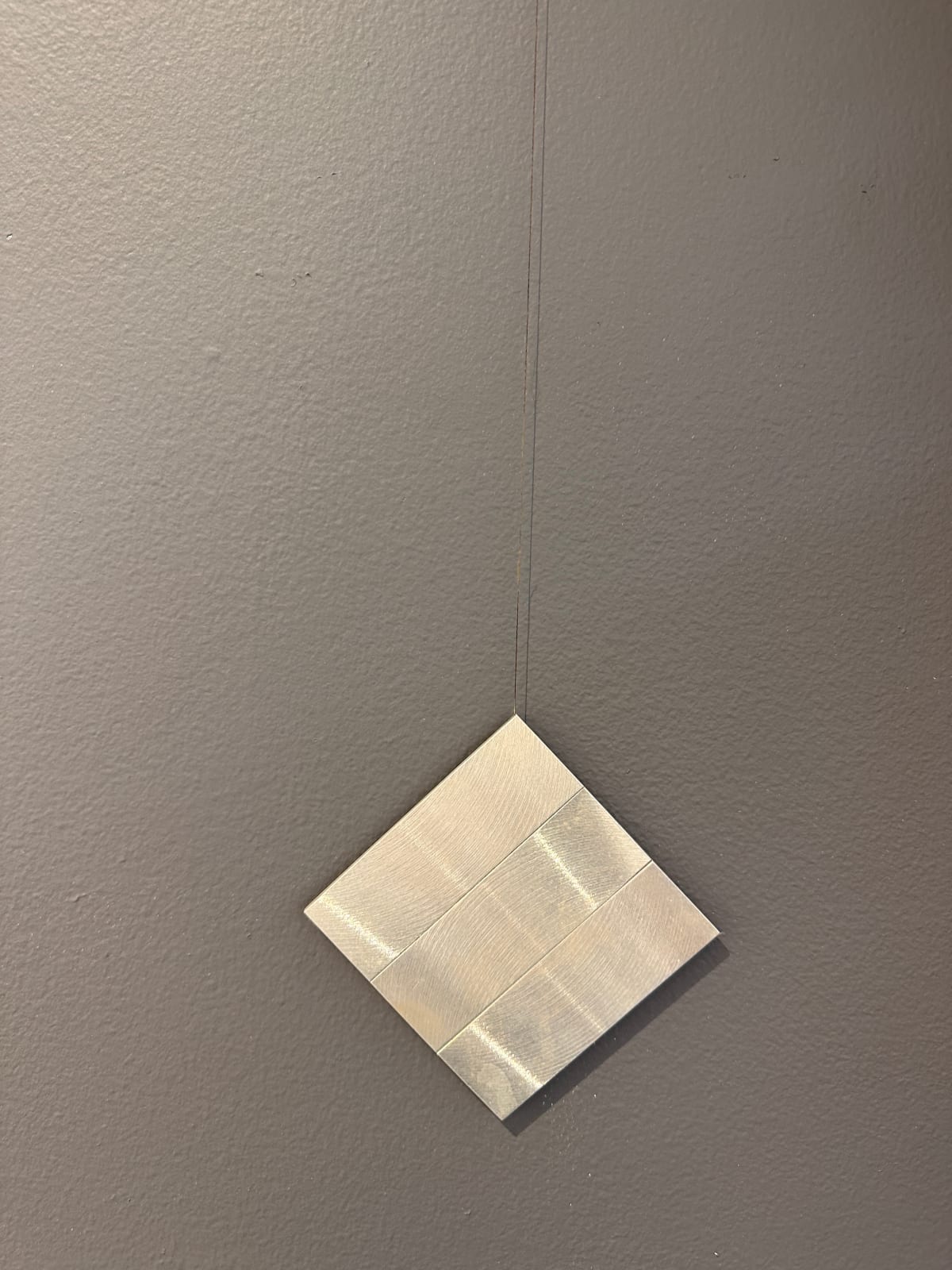
Getulio Alviani
Untitled , 1960
Brushed Aluminum
4 x 4 in
10.2 x 10.2 cm
10.2 x 10.2 cm
103-2436
Copyright The Artist
A leading figure in the kinetic art movement, Getulio Alviani works across many mediums and disciplines, including painting, printmaking, sculpture, graphic design, architecture, and industrial design. His most extensive and...
A leading figure in the kinetic art movement, Getulio Alviani works across many mediums and disciplines, including painting, printmaking, sculpture, graphic design, architecture, and industrial design.
His most extensive and lauded series of sculptures, “Vibrating Texture Surfaces” (1960–the 70s), made of freehand steel and aluminum sheets, was inspired by the polished surfaces he encountered in the Italian factory where he worked. The sculptures’ rotating metal facades generate continuously shifting views through changing angles and light.
In the early 1960s, Alviani was included in the “Nove Tendencije” (New Tendencies) exhibitions of Concrete and Constructive art in Zagreb, Croatia, which gathered artists who sought to create work reflecting the era’s advanced mass production. He connected with like-minded artists, including Julio Le Parc, Francois Morellet, and Enrico Castellani, in the Groupe de Recherche d’Art Visuel in Paris. In 1964, Alviani was featured in Italy’s presentation at the Venice Biennale. He was also included in “The Responsive Eye,” a pivotal 1965 kinetic art exhibition at the Museum of Modern Art.
MoMA later acquired several of his works.
His most extensive and lauded series of sculptures, “Vibrating Texture Surfaces” (1960–the 70s), made of freehand steel and aluminum sheets, was inspired by the polished surfaces he encountered in the Italian factory where he worked. The sculptures’ rotating metal facades generate continuously shifting views through changing angles and light.
In the early 1960s, Alviani was included in the “Nove Tendencije” (New Tendencies) exhibitions of Concrete and Constructive art in Zagreb, Croatia, which gathered artists who sought to create work reflecting the era’s advanced mass production. He connected with like-minded artists, including Julio Le Parc, Francois Morellet, and Enrico Castellani, in the Groupe de Recherche d’Art Visuel in Paris. In 1964, Alviani was featured in Italy’s presentation at the Venice Biennale. He was also included in “The Responsive Eye,” a pivotal 1965 kinetic art exhibition at the Museum of Modern Art.
MoMA later acquired several of his works.
